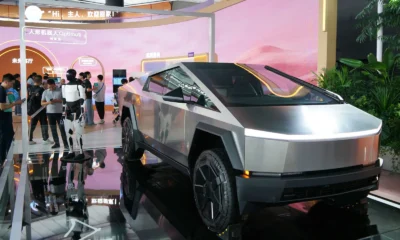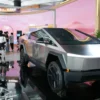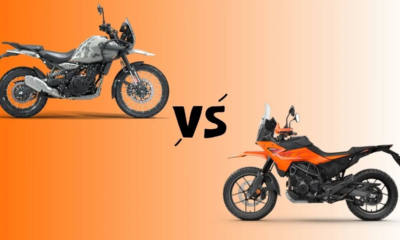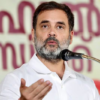Tesla Enters India: A Long Road Ahead?
Tesla Arrives in India. But Can It Power Through the Long Haul?
The EV giant’s entry is a milestone—but success will depend on localisation, policy navigation, and mass-market adaptation.
After years of speculation, lobbying, and high-stakes negotiation, Tesla has officially entered the Indian market. The company’s first showroom—an experience centre—has opened in Mumbai’s upscale Bandra Kurla Complex, with a second outlet in Delhi expected to follow soon. Bookings for the Model Y SUV are now live, marking the electric vehicle (EV) maker’s long-awaited debut in one of the world’s fastest-growing automobile markets.
But while the headlines celebrate Tesla’s arrival, the road ahead is far from smooth. The company’s India entry raises more questions than answers—about pricing, policy, competition, and whether Elon Musk’s EV empire can do more than just dip its toes in the subcontinent.
The Price Barrier
The Model Y, Tesla’s flagship in India, will initially be sold as a completely built unit (CBU)—fully imported from the company’s Gigafactory in Shanghai. The base rear-wheel-drive model is priced at ₹60 lakh, with the long-range variant going up to ₹68 lakh.
That pricing makes it one of the most expensive Teslas in the world. By comparison, the same car starts at $44,990 in the US and 263,500 yuan in China. The difference is largely due to India’s steep import duties, which can exceed 100% on fully built foreign cars.
While India recently overtook Japan to become the world’s third-largest auto market, Tesla is entering at the very top end of the spectrum. Luxury EVs make up just 4–5% of total car sales in the country—meaning Tesla is targeting a niche within a niche.
Tesla’s cautious rollout reflects this reality. According to import data reviewed by Reuters, the company has brought in just six Model Y units and Supercharger hardware worth about $1 million. For now, the splash is more symbolic than commercial.
Policy and Politics
Tesla’s pricing challenge is inseparable from India’s policy landscape. The government’s high tariffs on fully built EVs have long been a sticking point in Tesla’s India plans. While discussions of a US–India trade agreement offer a potential path to lower duties, the timeline remains uncertain.
Geopolitics only adds to the uncertainty. The potential return of Donald Trump, a vocal EV skeptic, to the White House could reduce Washington’s enthusiasm for backing Tesla in foreign markets. Meanwhile, Musk’s own fluctuating stance on global trade and politics doesn’t inspire confidence in long-term policy continuity.
Caught between tariffs and trade talks, Tesla now stands at a critical crossroads: wait for policy shifts or commit to local manufacturing.
The Localisation Puzzle
India’s revised EV policy offers a middle path. Companies investing $500 million or more and establishing a local factory can benefit from reduced import duties of just 15%—a significant concession. However, there’s a catch: firms must achieve 50% local sourcing within five years.
That’s no small ask for Tesla. The company’s centralised global supply chains are geared toward mass production in North America and China. Replicating that efficiency in India would require reimagining everything from suppliers to service infrastructure.
Still, experts believe localisation is Tesla’s best bet. “India is a fast-growing but untapped market in the EV sector,” says Ross Maxwell, Global Strategy Lead at VT Markets. “EV adoption remains below 2%, even though India is the third-largest auto market globally. With the right investment, Tesla can unlock scale, lower prices, and tap into long-term growth.”
Rivals in the Rearview
Tesla doesn’t just face regulatory hurdles—it’s entering a crowded and rapidly evolving EV market.
Luxury automakers like BMW, Audi, and Mercedes-Benz already have electric offerings in India. While these too are high-priced, they benefit from existing dealer networks, brand familiarity, and after-sales support—areas where Tesla is still building its presence.
Then there’s BYD, the Chinese EV juggernaut that briefly surpassed Tesla in global EV sales. BYD has introduced models like the Sealion 7 in India, which undercut Tesla’s pricing. However, its expansion is restricted by India’s strict rules on Chinese investment, which require local joint ventures and government approvals—giving Tesla a temporary competitive advantage.
Meanwhile, domestic players like Tata Motors and Mahindra are moving swiftly. Tata’s Nexon EV and Tiago EV have found resonance with middle-class buyers, thanks to accessible pricing, government subsidies, and growing charging infrastructure. Unlike Tesla, they’re not relying on luxury buyers—they’re building for the masses.
A Start, But Not Yet a Strategy
The real risk for Tesla is that it may remain a luxury outlier—a brand seen more in Instagram reels than on Indian roads. Without serious steps toward local assembly, pricing rationalisation, and infrastructure expansion, the Model Y may remain confined to metro showrooms and high-net-worth garages.
Tesla’s global brand strength and the aspirational value it carries in India are undeniable. But in a country where value drives volume, brand alone isn’t enough. Unless Tesla adapts to the pricing realities, regulatory expectations, and competitive pressures unique to India, its presence may remain symbolic rather than transformational.
The opportunity is huge. India is on the cusp of an EV revolution, with government incentives, environmental awareness, and consumer curiosity all pointing to potential growth. But seizing that opportunity will require more than a showroom and a Supercharger.
Conclusion: At the Crossroads
Tesla’s India debut is a momentous milestone—but the real journey starts now. Can it scale beyond the elite? Can it build an ecosystem, not just sell cars? Can it commit, invest, and manufacture in India for India?
These are the questions that will define whether Tesla’s entry is the start of something big—or just a high-voltage photo op.
IT.


























